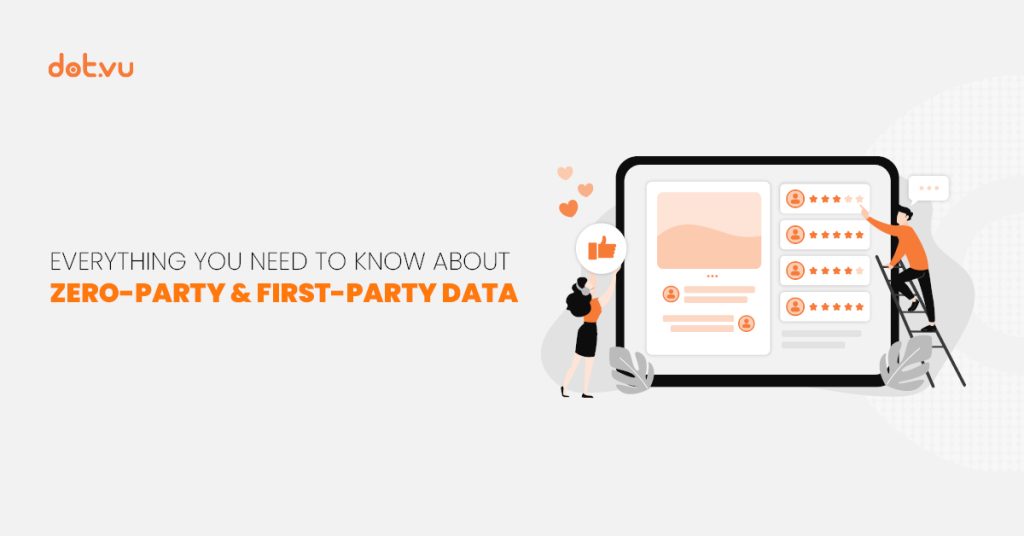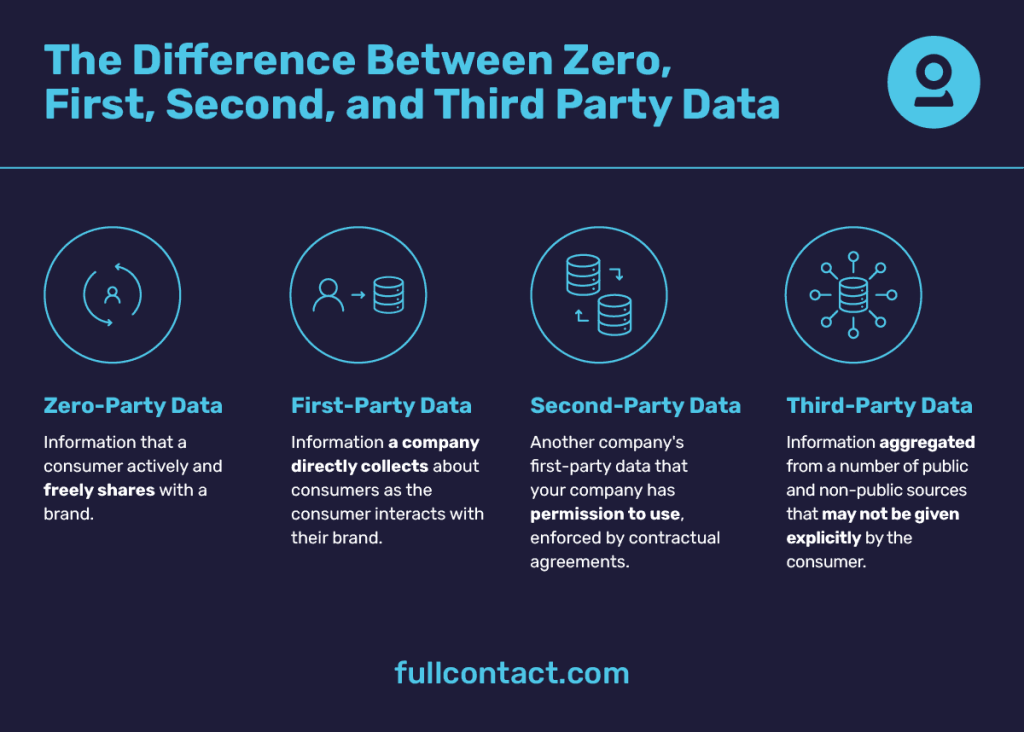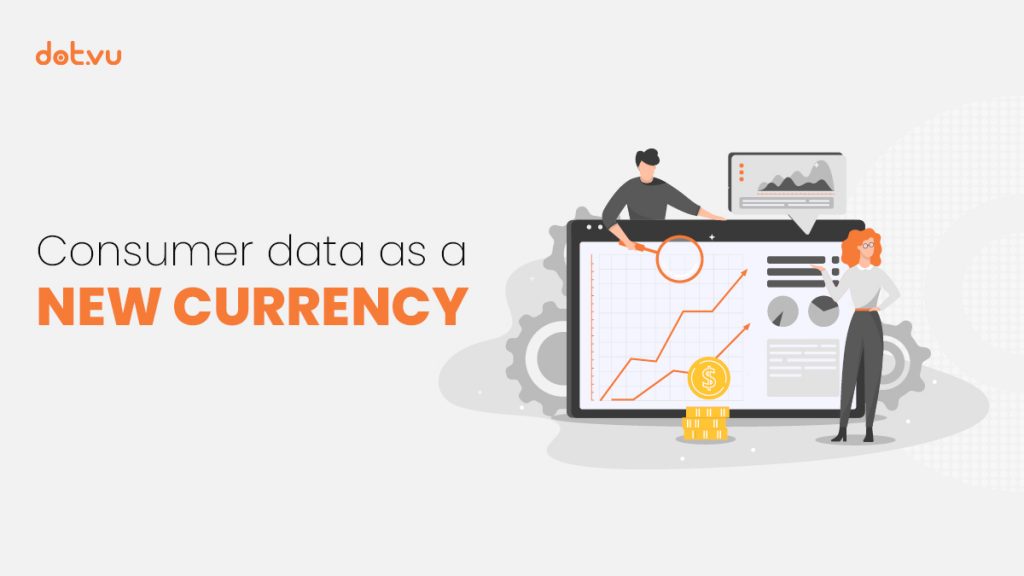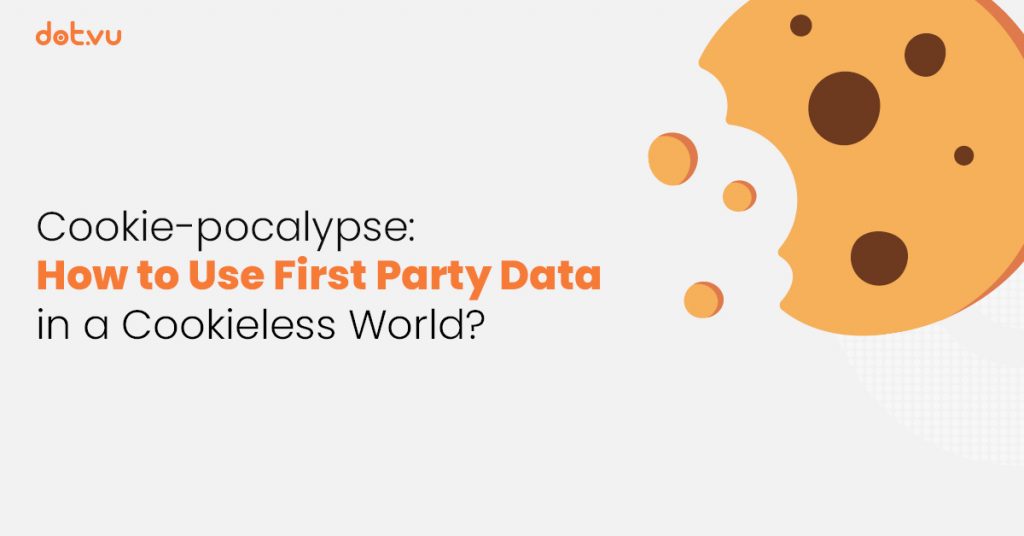
With data-driven marketing, marketers can use the data that has been collected to understand their target audience better. It allows marketers to come up with targeted marketing strategies to improve the customer experience.
There are many ways to gather data. Some require the consumer to voluntarily offer information about themselves, and some without their knowledge. Due to the rising concern of personal data, many new regulations have come up, such as the General Data Protection Regulation (GDPR) in EU.
However, as a 2019 study from Salesforce.com shows, this is not enough to address the online consumers’ concerns. Companies also need to play a very important role and start rethinking how they collect data.
In this blog post, we’ll define the types of customer data, their benefits, and best practices in gathering them.
- Why is everyone focusing on zero party data and first party data now?
- Types of customer data
- Zero-Party Data vs First-Party Data
- Data collection strategies: Collecting zero & first-party data
- Zero Party Data & First Party Data: Best Practices
- The future of zero-party data
- Take the first step towards greater interactivity!
- *Bonus test!
Why is everyone focusing on zero party data and first party data now?
The data landscape is shifting. Third party cookies are on the way out, and companies are not relying on this data source as much as before. One main reason for this shift is the data privacy regulations that are becoming more stringent.
With these changes, companies are also adapting their methods of data collection. They want to ensure their customers’ privacy is respected. They need to build trust and be transparent in how they collect data.
Zero- and first-party data both come directly from consumers and ultimately can provide richer insights for organizations. Thus, many companies have switched to collecting zero and first-party data.
Types of customer data
The difference between zero, first, second, and third-party data is based on how they are obtained.

0-party data : Shared intentionally by consumer with a brand.
1st-party data : Collected by a brand as the result of consumer interactions.
2nd-party data : First-party data shared with another company through a contractual agreement.
3rd-party data : Information obtained from a variety of sources, with or without consumer’s consent.
What is zero-party data?
Zero-party data is data that a customer intentionally shares with a brand. It can include preferences, purchase intentions, personal contexts, and data on how an individual wants to be recognized by the brand.
When collecting Zero-Party data, you directly ask your customers what they like, what they need, what they don’t like, etc. Then, you are 100% sure of the accuracy of your data because it’s not implied.
“Zero-party data is the new oil” – Forbes
The term zero-party data is fairly new, with the term being coined in 2020 by Forrester Research. Deemed “the new oil” by Forbes, it shows how important zero-party data is – when it’s being compared to the value of oil.
Benefits of collecting zero-party data:
- Better quality data
- Increase customer engagement
- Build relationships based on trust and satisfaction
- Better personalization
What is first-party data?
First-party data is data collected directly from customers. You collect this data by observing how your customers interact with your brand in-store, on your website, or on your app. It can be based on where customers click, what they buy, what Social Media topics they interact with, what’s their favorite products, how much Loyalty Points they collect, and much more.

With its growing popularity, even the Marketoonist series featured a comic on first-party data!
Benefits of collecting first-party data:
- Help predict future buyer behaviors
- Gain customer insights (e.g., customer behaviors, trends, etc.)
- Improve customer segmentation
- Enhance your marketing automation efforts
- Personalize your product offering and marketing strategies
What is second-party data?
Second-party data is the data collected by one company and shared with another. This can include information such as customer data, insights from market research, and anonymous user data. Second-party data is usually shared through partnerships and collaborations between businesses.
However, because the data is not based on how your customers interact with your brand, it is not considered as valuable as zero-party data and first-party data.
What is third-party data?
Third-party data comes from many different sources. It consists of rich behavioral, demographic data. However, it can be unreliable because the sources are unknown, and the data could potentially be outdated.
Zero-Party Data vs First-Party Data
Both Zero-Party Data and First-Party Data are information/data that you collect by yourself. It’s data on your customers’ preferences, behaviors, needs, and so on. First-Party Data is relatively well-known amongst Marketers, while Zero-Party Data is a relatively new term.
That’s why on many websites, you’ll see that Zero-Party is included within First-Party Data instead of being its own separate thing. While Zero-Party Data can be included in First-Party Data, the opposite is not true as Zero-Party Data only includes explicit data. First-Party Data also includes implicit data.
Data collection strategies: Collecting zero & first-party data
Third-party data collection tools can range from clickstream data to survey data to data gathered from social media. However, collecting zero and first-party data is different.
Accessible, no-code tools can make it much easier for brands to collect customer data. Therefore, even non-technical employees can collect data directly from their customers in a fun and engaging way.
Zero-party data isn’t only for big brands. Any business can benefit from collecting data directly from their customers. By using different types of Interactive Content, businesses of all sizes can gather data that are reliable, accurate, and engaging.
Here are 4 examples of how you can collect data using Interactive Content:
1. Quizzes
Quizzes are a great form of Interactive Content that can grab the audiences’ attention. Since quizzes are something that people are already inclined towards, adding this to your marketing strategy can easily garner valuable zero-party data. You can gate your quiz with a lead form just before the results. If people find the quiz interesting, they would be more likely to fill in their details like their name and email address.
2. Personality Tests
People LOVE tests; especially Personality Tests! The customer will be given a set of questions that will determine their personality type based on the answers given.
Studies have found that people love answering questions about themselves and, as a result, build a stronger relationship with the businesses they are engaging with. By asking the right questions, brands can create more personalized, customized experiences with customers.

Click to view Personality Test template
3. Interactive Survey
Surveys are also a good way of providing customers with a personalized experience in exchange for data. It tells the customer that their opinion is important to you, and at the same time you’ll get to learn more about them.

Click to view Interactive Survey template
4. Guided Selling
Through the Guided Selling, your customers will be assisted in narrowing down their choice of product by answering a few questions. Not only does it enhance the buyer experience, you’ll be able to record their preferences based on their answers for each question.

Click to view Guided Selling template
Zero Party Data & First Party Data: Best Practices

1. Create a two-way value exchange
One thing to keep in mind is that First-Party Data is a two-way exchange based on trust. You must ask for your customers’ consent and clearly indicate what’s the value for them. For example, you could highlight that by sharing their preferences with you, the data will be used to optimize your product offering, allowing you to offer products that better fit their needs.
2. Follow the data regulations
When collecting zero-party data and first-party data, you must comply with the data regulations in the locations where your company conducts business in. Even so, following the regulations alone might not be enough to gain trust. Companies need to take that one step further and be extra transparent in how they collect data, what data they collect, and why they collect it.
3. Use innovative data collection methods
When collecting zero-party data, companies need to focus on innovative data collection methods. If the content provides value to the customer, there’s higher chances they will gladly offer their details. This can be done by using Interactive Experiences like the ones suggested in the Data Collection Strategies section above.
Companies can also leverage other types of Interactive Content, such as Marketing Games, to understand consumer behavior and collect customer data.
4. Invest in UX design
Designing enjoyable and entertaining interactive experiences will encourage your customers to share their contact details, their preferences, and their needs with you. That is why investing in UX design is very important.
The future of zero-party data
The web is clearly moving toward greater interactivity, greater personalization and a more engaging experience. Companies like Meta (formerly Facebook) aim to take advantage of this trend by offering users new ways to interact with the web and the metaverse.
Zero-party data will be a critical part of this new interactive paradigm. Fortunately, with the advent of zero-party data, users will be more likely to share their information with brands they trust.
The importance of zero-party data will only continue to grow in the years ahead. As data privacy laws become more stringent, and as customers become more aware of the risks of third-party data, brands will need to increasingly rely on data they can trust—and that is only possible with zero-party data.
Take the first step towards greater interactivity!
Interactive Content is becoming a necessity for companies that aim to stay relevant. To their core, Interactive Experiences are designed to provide value to the audience while collecting zero-party and first-party data, making it the best way to gather customer information.
On Dot.vu’s Interactive Content Platform, you can collect zero and first-party data by designing amazing Interactive Experiences. With a simple drag-and-drop editor, you can customize any of our 300+ templates to suit your brand.
Each time a customer answers a question in your Quiz or Personality Test, or navigate through your Guided Selling experience, you’ll be able to record precious zero and first-party data.
Bonus Test!
Test your knowledge by clicking on the image below:
Got a high score? Send us a screenshot of the result page and get freebies from us! Email to: info@dot.vu


